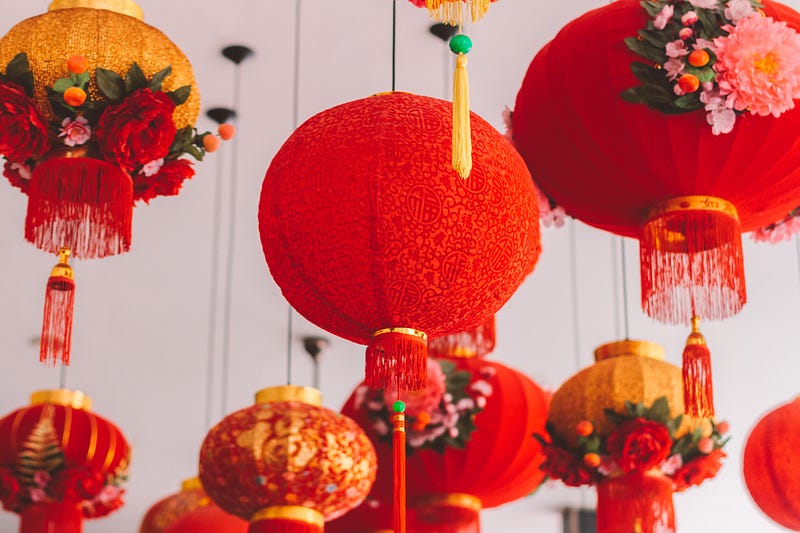Understanding the Lunisolar New Year: A Cultural Exploration
Written on
Chapter 1: The Global Celebration of the Lunisolar New Year
Each year, during January or February, communities around the globe that are influenced by Chinese culture gather to celebrate what is commonly referred to as the Lunar New Year. While some advocate for the term "Lunar New Year" to reflect its global nature and cultural inclusivity, I wish to address a different perspective.
In truth, the festival celebrated as the Chinese New Year, or Lunar New Year, does not strictly adhere to a purely lunar calendar. This celebration is not limited to China alone; it spans numerous regions in Asia, including Korea and Vietnam, as well as nations with significant Chinese populations such as Singapore and Malaysia. Dispersed Chinese communities worldwide also partake in this vibrant festival.
Historically, Japan celebrated the New Year on the same day as the Lunar New Year until the Meiji Restoration, which shifted the nation to the Gregorian calendar. Nowadays, Japan observes New Year’s Day on January 1st, marked by extravagant meals. Interestingly, the term for the Lunar New Year in Japan, ?? (shunsetsu), aligns with its designation in Chinese-speaking regions, while the old New Year is referred to as ky?sh?gatsu ???.
In Vietnam, however, there is an intriguing variation. A Vietnamese colleague once informed me that while this year is recognized as the Year of the Rabbit in the Chinese zodiac, it is considered the Year of the Cat in Vietnam—a zodiac sign that does not exist in the Chinese tradition. This highlights how cultures can uniquely interpret shared celebrations.
Yet, this discussion is not merely about cultural nuances or sensitivities; it delves into the realms of astronomy, mathematics, and the history of calendars.
The reality is straightforward: the so-called Lunar New Year is not solely lunar, as it is not derived from a lunar calendar. To grasp this concept, one must explore the various types of calendars we utilize today.
Section 1.1: Solar Calendars and Their Significance
From ancient times, civilizations have measured time based on celestial events—the sun, moon, and stars. Early societies had a profound awareness of the seasons, which were crucial for agricultural success. Understanding the heavens could mean the difference between a fruitful harvest and a harsh winter of scarcity.
In our interconnected world, we predominantly follow the solar calendar, specifically the Gregorian calendar, which superseded the Julian calendar in 1582. This revision fine-tuned leap years, creating a calendar year of 365.24 days, which closely approximates the actual solar year—the duration it takes for Earth to complete one orbit around the sun.
Subsection 1.1.1: Lunar Calendars Explained

An example of a purely lunar calendar is the Hijri or Islamic calendar, which tracks the moon's cycle rather than the sun's. This results in an Islamic year comprising 354 days, falling short by 11 days compared to the Gregorian calendar. As a result, Islamic holidays shift backward through the seasons.
This brings us to the question: why does the Lunar New Year vary each year in the Gregorian calendar, consistently landing in late January or early February? The answer lies in the moon's cycle, which is likely why the term "Lunar" persists.
Chapter 2: The Lunisolar Calendar Unveiled
The first video titled "Is Vietnamese New Year the same as Chinese New Year?" explores the cultural distinctions and similarities between these two celebrations, highlighting the unique aspects of each tradition.
The Chinese calendar, established long ago, is not merely lunar but a lunisolar calendar. This was clarified during the Han dynasty when Emperor Wu approved a calendar reform that marked the New Year based on the first new moon following the sun's entry into the 11th sign of the solar zodiac. In contemporary terms, the Lunar New Year is celebrated on the second new moon after the winter solstice in the northern hemisphere.
This solstice occurs around December 22 each year, marking the shortest day and longest night. The increase in daylight afterward was historically significant for agrarian societies.
As a side note, the timing of Christmas on December 25th may have been influenced by pre-existing winter solstice celebrations in Rome, such as Saturnalia, making it more palatable for early Christians to adopt.
To summarize, the Chinese calendar is fundamentally lunisolar—a blend of solar and lunar systems. This ensures that the Lunar New Year typically falls between January 20 and February 20 on the Gregorian calendar.
Section 2.1: The Agricultural Roots of the Lunisolar New Year
The essence of the Chinese calendar is encapsulated in its name, often referred to in Singapore as the ?? (Nónglì), which translates to the agricultural calendar. The Spring Festival signifies the arrival of spring and signals the ideal time for planting new crops—a testament to our ancestors’ awareness of the seasons.
This festival reflects a time when people's survival hinged on the correct timing of planting and respecting nature's cycles. Sadly, this deep connection to nature can often be overshadowed by the commercialization of celebrations today.
So, let's embrace the term "Lunisolar New Year" to honor its agricultural heritage. May we be reminded of our dependence on nature and the seasons, which is increasingly vital in the face of climate change. While we celebrate this joyous season, let's remain grateful for the bountiful harvests that sustain us.
Wishing everyone a Happy Lunisolar New Year!
The second video titled "What is Lunar New Year and how is it different from Chinese New Year?" provides insights into the distinctions and shared traditions of these celebrations, offering a broader understanding of their significance.
As we embark on this new year, consider embracing a Japanese idiom that encourages us to cherish every moment, as it will never return.
© Alvin T. 2023 The author is an editor at Japonica, a publication focused on Japan, but also writes on broader cultural and societal themes. Discover his most popular articles here. If these topics interest you, consider subscribing for a monthly digest of new stories via email.